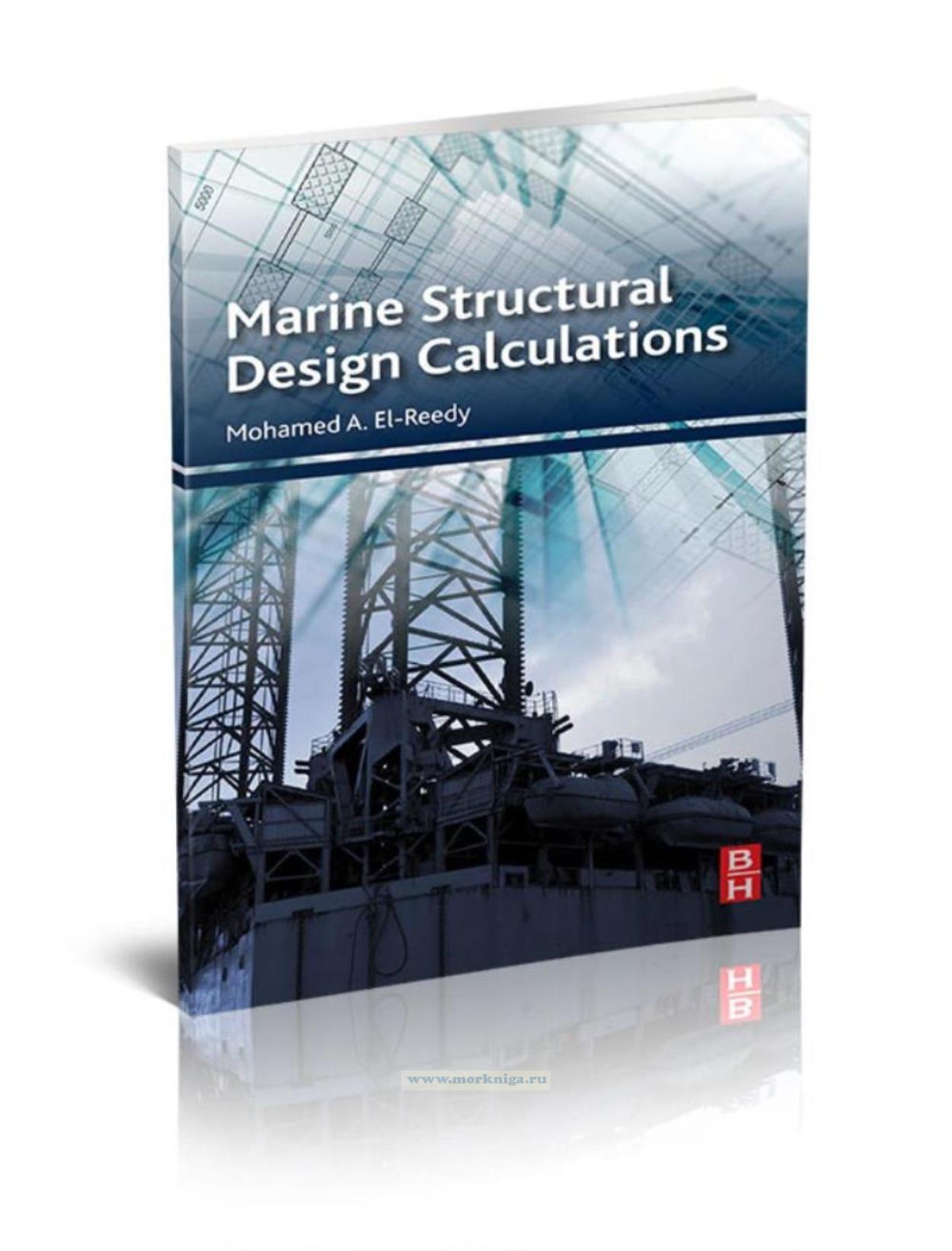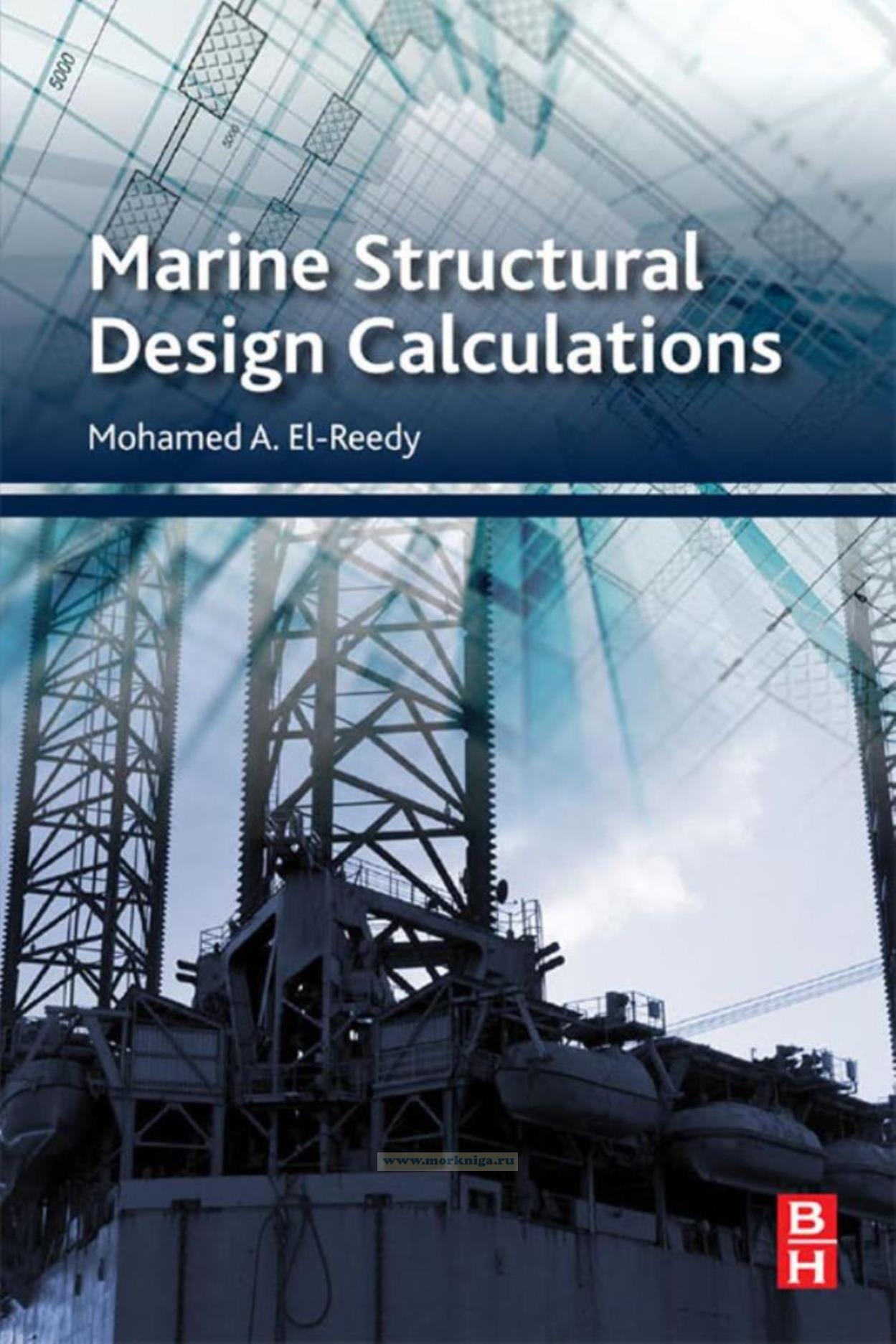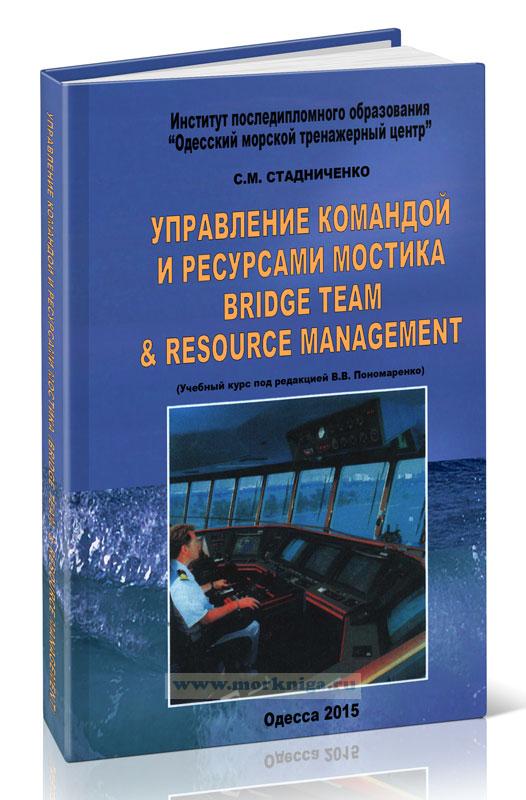Сб с 10 до 16
Marine Structural Design Calculations. Расчет конструкции морского сооружения
Calculation methods for all areas of marine structural design and construction are presented and practical solutions are provided. Theories, principles, and practices are summarized. The concentration focuses on formula selection and problem solving. A "quick look up guide", Marine Structural Design Calculations includes both fps and SI units and is divided into categories such as Project Management for Marine Structures; Marine Structures Loads and Strength; Marine Structure Platform Design; and Geotechnical Data and Pile Design. The calculations are based on industry code and standards like American Society of Civil Engineers and American Society of Mechanical Engineers, as well as institutions like the American Petroleum Institute and the US Coast Guard.
Case studies and worked examples are included throughout the book.
Contents
About the Author
Preface
1 Introduction to Offshore Structures
1.1 Introduction
1.2 History of offshore structures
1.3 Overview of field development
1.4 Types of offshore platforms
1.4.1 Drilling/well protected platforms
1.4.2 Tender platforms
1.4.3 Self-contained platforms
1.4.4 Production platforms
1.4.5 Quarters platforms
1.4.6 Flare jackets and flare towers
1.4.7 Auxiliary platforms
1.4.8 Bridges
1.4.9 Helidecks
1.5 Types of offshore structures
Further reading
2 Engineering Management for Marine Structures
2.1 Overview of field development
2.1.1 Project cost and the life cycle
2.1.2 Concept and screening selection
2.2 FEED engineering phase
2.3 Detail engineering phase
2.4 Engineering design management
2.4.1 Engineering stage time and cost control
2.4.2 Engineering interfaces
2.4.3 Structural engineering quality control
Further reading
3 Offshore Structures’ Loads and Strength
3.1 Introduction
3.2 Gravity load
3.2.1 Dead load
3.2.2 Live load
3.2.3 Impact load
3.2.4 Design for serviceability limit state
3.2.5 Crane support structures
3.3 Wind load
3.4 Offshore loads
3.4.1 Wave load
3.4.2 Current load
3.5 Earthquake load
3.5.1 Extreme level earthquake requirements
3.5.2 Abnormal level earthquake requirements
3.5.3 ALE structural and foundation modeling
3.6 Ice loads
3.7 Other loads
3.7.1 Marine growth
3.7.2 Scour
3.8 Design for ultimate limit state
3.8.1 Load factors
3.8.2 Partial action factors
3.9 Collision events
3.10 Material strength
3.11 Cement grout
Further reading
4 Offshore structures design
4.1 Introduction
4.2 Guide for preliminary design
4.2.1 Approximate dimensions
4.2.2 Bracing system
4.2.3 Jacket design
4.3 Structure analysis
4.3.1 Global structure analysis
4.3.2 The loads on the piles
4.3.3 Modeling techniques
4.4 Dynamic structure analysis
4.4.1 Natural frequency
4.5 Cylinder member strength
4.5.1 Cylinder member strength calculation by ISO19902
4.5.2 Cylinder member strength calculation by API RP2A
4.6 Tubular joint design
4.6.1 Simple joint calculation from API RP2A (2007)
4.6.2 Joint calculation from API RP2A (2000)
4.7 Fatigue analysis
4.7.1 Stress concentration factors
4.7.2 S-N curves for all members and connections, except tubular connections
4.7.3 S-N curves for tubular connections
4.7.4 Jacket fatigue design
4.8 Topside design
4.8.1 Topside structure analysis
4.8.2 Deck design to support vibrating machines
4.8.3 Grating design
4.8.4 Handrails, walkways, stairways, and ladders
4.9 Bridges
4.10 Vortex-induced vibration
Further reading
5 Helidecks and boat landing design
5.1 Introduction
5.2 Helideck design
5.2.1 Helicopter landing loads
5.2.2 Safety net arms and framing
5.3 Design load conditions
5.3.1 Helideck layout design steps
5.3.2 Plate thickness calculation
5.3.3 Aluminum helideck
5.4 Boat landing design
5.4.1 Boat landing calculation
5.4.2 Boat landing design using a nonlinear analysis method
5.4.3 Boat impact methods
5.4.4 Tubular member denting analysis
5.5 Riser guard
5.5.1 Riser guard design calculation
Further reading
6 Geotechnical data and piles design
6.1 Introduction
6.2 Geotechnical investigation
6.2.1 Performing an offshore investigation
6.3 Soil tests
6.4 In-situ testing
6.4.1 Cone penetration test
6.4.2 Field vane test
6.5 Soil properties
6.5.1 Strength
6.5.2 Soil characterization
6.6 Pile foundations
6.6.1 Pile capacity for axial loads
6.6.2 Foundation size
6.6.3 Axial pile performance
6.6.4 Pile capacity calculation methods
6.7 Pile wall thickness
6.7.1 Design pile stresses
6.7.2 Stresses due to the weight of the hammer during hammer placement
6.7.3 Minimum wall thickness
6.7.4 Driving shoe and head
6.7.5 Pile section lengths
6.8 Pile drivability analysis
6.8.1 Evaluation of soil resistance drive
6.8.2 Unit shaft resistance and unit end bearing for uncemented materials
6.8.3 Upper- and lower-bound SRD
6.8.4 Results of wave equation analysis
6.8.5 Results of drivability calculations
6.8.6 Recommendations for pile installation
6.9 Soil investigation report
6.10 Composite pile
6.11 Mud mat design
Further reading
7 Construction and installation lifting analysis
7.1 Introduction
7.2 Construction procedure
7.3 Engineering the execution
7.4 Construction process
7.4.1 Fabrication tolerances
7.4.2 Stiffener tolerances
7.4.3 Conductor guides and piles tolerances
7.4.4 Dimensional control
7.4.5 Jacket assembly and erection
7.5 Installation process
7.5.1 Loadout process
7.5.2 Transportation process
7.5.3 Barges
7.5.4 Launching and upending forces
7.6 Lifting analysis
7.6.1 Weight control
7.6.2 Weight calculation
7.6.3 Classification of weight accuracy
7.6.4 Loads from transportation, launch, and lifting operations
7.6.5 Lifting procedure and calculation
7.6.6 Structural calculations
7.6.7 Lift point design
7.6.8 Clearances
7.6.9 Lifting calculation report
Further reading
8 SACS Software
8.1 Introduction
8.2 In-place analysis
8.3 Defining member properties
8.4 Input the load data
8.4.1 Joint can
8.4.2 The foundation model
8.5 Output data
8.6 Dynamic analysis
8.6.1 Eigenvalue analysis
8.7 Seismic analysis
8.7.1 Combination of seismic and gravity loads
8.8 Collapse analysis
8.9 Loadout
8.10 Sea fastening
8.10.1 Load combinations
8.11 Fatigue analysis
8.11.1 Center of damage
8.11.2 Generation of the foundation superelement
8.11.3 Dynamic wave response analysis
8.11.4 Fatigue input data
8.12 Lifting analysis
8.13 Flotation and upbending
8.14 On-bottom stability
8.15 Launch analysis
8.16 Summary
8.16.1 Static analysis
8.16.2 Dynamic analysis
8.16.3 Seismic analysis
8.17 Fatigue analysis
8.17.1 Collapse analysis
8.17.2 Lifting analysis
8.17.3 On-bottom stability
8.17.4 Tow analysis
Appendix: Assignment
Index


 Управление командой и ресурсами мостика. Bridge Team & Resource Management (рус./англ.)
Управление командой и ресурсами мостика. Bridge Team & Resource Management (рус./англ.)  Основы управления судном при плавании в узкостях
Основы управления судном при плавании в узкостях  Судовой стюард-бортпроводник
Судовой стюард-бортпроводник